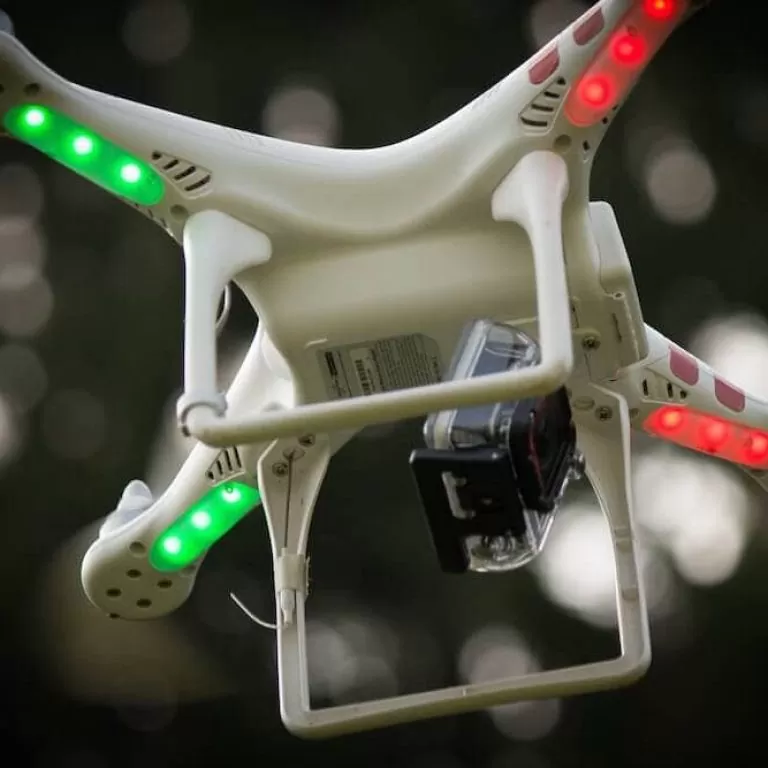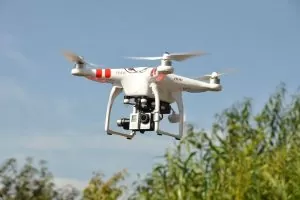
News The alternative use of unmanned aerial vehicles (drones)
In previous blogs we have highlighted the increased use of drones and also the reasons behind they are becoming so popular.

The majority of ‘incidents’ involving drones have focused on photography, which is still the main reason for their use.
Both fascinating to view and hugely insightful, drone images are as much a tool as they are for viewing pleasure. This video of fog over the Surrey countryside, near Guildford, is a prime example of drone footage being successfully edited together with time-lapse photography. It gives the audience a new perspective on fog, which we tend to only see when it’s low to the ground and causing us nuisance!
Purely as a photography tool, then, the drone manufacturers have the market all sewn up. (That is, unless you have a white-tailed eagle to hand!) They have come into their own over the past few days, as Buffalo, New York, suffered what is known as “lake-effect” snow. What has been missing from previous snowfall news reports (which come about every year and offer no new information) is drone photography. Unmanned aerial vehicles (UAVs) show the sheer scale of the blizzard, which has brought the city to its knees. Not surprising when it is reported the New York city has received as much snowfall in three days as it usually gets in a whole year.
But, despite the current stigma around them, future-proofing UAVs seems to be of paramount importance. And no wonder, because with great ideas like below being tested it probably won’t be a bumpy ride in the following years.
The ambulance drone
Time flies in the drone world (please excuse the pun) and it’s already been a few weeks since news of ‘the ambulance drone’ first came about.
It’s certainly not a replacement for paramedics, who, as ever, will continue to provide a vital role in emergency care. But if any drone enthusiasts wanted to make a point against the naysayers, this might just have done it.
Dutch engineering graduate Alec Momont’s specialist flying defibrillator (which it essentially is) can reach speeds of up to 60mph, allowing for immediate, potentially life-saving care for heart attack victims. Even more impressively the drone can reach a patient up to 4.6 square miles within one minute.
Whilst the video doesn’t explicitly allude to it, the drone relies on remote photography to control and land it. Then, once connected by someone at the scene, a paramedic will remotely activate the machine. This quick response method could increase the survival rate from 8% to 80%, Momont claims.
Intelligent unmanned aerial vehicles
A potential fault with the ambulance drone – that also doubles up as an accidental safety feature – is the human input needed to keep the crafts in the air. Without constant commands, the UAV simply won’t fly.
Enter the X8+ from 3D Robotics, a drone for all purposes. This relatively cheap UAV combines all the individual uses of various commercial drones available, as an all-in-one package. Although it doesn’t come with a camera, it does have the capacity to carry one – as well as (separately) carrying packages or mapping terrain.
The difference to many drones currently on the market is that it is robotic, which means it can follow you around, fly to an exact location you select or keep it focused on a specific point or area.
Combine the aerial mapping with a camera and you have a pretty nifty tool, particularly for construction site monitoring. Cover demolition from the air and prepare groundwork and foundations with the assistance of such a drone. Technology is not only increasing ease but also improving quality. And having a scientifically accurate plan of your site before work begins is a step closer with drones such as these.
Environmentally friendly drones
Stanford University (whose students and staff previously caused a storm with the Nixie) have teamed up with colleagues from Brown University and NASA experts to produce a “self-destructing” biodegradable drone, which can simply dissolve upon impact.
This is particularly important for drone use in sensitive environments. If a UAV fails and can’t be collected, such as a coral reef as highlighted, the drone will simply ‘disappear’. The technology is pretty advanced. The biodegradable components are made up of fungal composition, but “Codon Security” protects the environment it enters.
It’s all a little advanced – and still in the prototype stage – but this new way to construct UAVs is an exciting look into the future, keeping a tight grip on environmental responsibility. And biodegradable could also pave the way to lighter, safer flying objects.
And finally…
On the lighter side how about this Manchester restaurant’s novel use of drones? TGI Fridays at the Royal Exchange has launched “mistletoe drones” in their city-centre venue, with the view to rolling it out if it’s a success. Flying sprigs of the festive plant over diners and capturing any romantic embraces with the on-board camera is definitely going to raise some privacy questions – but then, it is the festive season. Should it just be accepted as a little light-hearted fun, that actually puts unmanned aerial vehicles in a good light?
Let us know your thoughts on drone technology. Tweet us at @timelapsefilms.